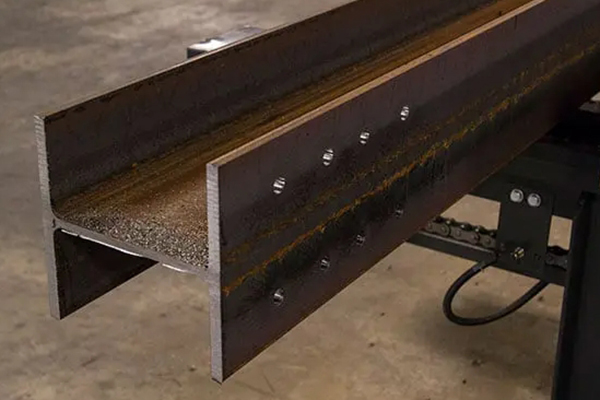A welded plate girder is a large structural beam fabricated by welding together flat steel plates to form an “I” or “H” shaped cross-section. These girders are commonly used in bridges, buildings, and industrial structures where high strength and load-carrying capacity are required. Unlike rolled steel beams, which come in standard sizes from the mill, welded plate girders can be custom-designed and fabricated to meet specific structural demands.
In this article, we’ll explore what a welded plate girder is, how it’s constructed, where it’s used, and its key advantages.
Basic Structure of a Welded Plate Girder
A standard plate girder consists of three main components:
-
Web: The vertical plate that resists shear forces.
-
Flanges: The horizontal plates at the top and bottom that resist bending.
-
Stiffeners: Additional plates welded perpendicular to the web to prevent buckling and increase strength.
These components are welded together, often using high-strength processes such as submerged arc welding, to form a strong, rigid structural member.
Unlike beams that are rolled in mills, welded plate girders can be fabricated in any size, offering more flexibility in design, especially for large-span applications.

Why Use Welded Plate Girders?
There are several reasons engineers and designers choose welded plate girders over traditional rolled sections:
1. Customization
Welded girders can be tailored to exact size and strength requirements. The thickness and depth of the web and flanges can be adjusted depending on the specific load and span requirements of a structure. This is particularly useful for long-span bridges, flyovers, and industrial buildings.
2. Cost Efficiency for Large Structures
While the initial fabrication of welded girders may be more labor-intensive, for large spans and heavy loads, they can be more economical than using multiple standard beams. They allow for material optimization, using thicker steel only where it’s structurally needed.
3. High Load Capacity
Because of their larger dimensions and the ability to reinforce them with stiffeners, welded plate girders can carry greater loads and span longer distances than standard rolled beams.
Where Are Welded Plate Girders Used?
You can find welded plate girders in many structural applications, including:
-
Bridges: They are especially common in highway and railway bridges where long spans are needed. Their high strength-to-weight ratio makes them ideal for spanning large gaps.
-
Industrial Buildings: Warehouses, factories, and plants that require large open interior spaces benefit from the load-bearing capabilities of plate girders.
-
Stadiums and Arenas: For roofs or upper-level support systems requiring wide spans without many columns.
-
Craneway Girders: Used in manufacturing facilities to support overhead cranes.
Construction and Fabrication
Welded plate girders are usually fabricated in specialized workshops or fabrication yards. The process includes:
-
Cutting steel plates to the required size.
-
Assembling the web and flange plates in a jig or fixture.
-
Welding the components using automatic or semi-automatic welding methods.
-
Adding stiffeners, if required, to strengthen the web.
-
Surface treatment like painting or galvanizing to protect from corrosion, especially in outdoor or marine environments.
The completed girder is then transported to the construction site and installed using cranes.
Advantages of Welded Plate Girders
-
Custom-built for unique applications
-
Higher strength and longer spans possible
-
Efficient material usage
-
Flexibility in design and shape
-
Can incorporate openings for utilities or access
Conclusion
A welded plate girder is a powerful structural tool in modern construction, offering the strength, flexibility, and customization that standard beams often cannot. Whether spanning a river or supporting the roof of a large warehouse, these girders help engineers achieve ambitious designs safely and economically. As infrastructure and building demands grow, the role of welded plate girders in structural engineering continues to be vital.
Post time: Apr-10-2025





